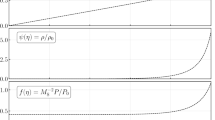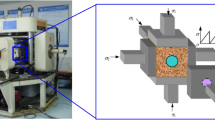Abstract
An explosively formed projectile (EFP) is designed as a high-velocity projectile generator to be used in a field test in which an equivalent fragment impacts on an equivalent tactical ballistic missile warhead. The formed slug of the EFP is ≈45 g and has a velocity of around 2500 m/sec. EFP detonation and slug forging are numerically simulated using an LS-DYNA3D finite-element code to optimize the design parameters of the EFP. Tests with determining EFP velocity and mass are performed to confirm the preliminary design and evaluate the EFP performance. A flash X-ray facility is employed to measure the profile and the velocity of the EFP slug. The high-velocity projectile generator developed herein can be used in verifying the lethality of the antitactical ballistic missile warhead against tactical ballistic missile. It is also useful for research of the resistance of military fortifications and nuclear power plant containment structures to penetration.
Similar content being viewed by others
References
E. Schneider and F. Schäfer, “Hypervelocity impact research — acceleration technology and applications,” Adv. Space Res., 28, 1417–1427 (2001).
R. W. Wood, “Optical and physical effects of high explosives,” Proc. R. Soc. London, A, 157, 249–261 (1936).
M. Held, “Air target warheads,” Int. Def. Rev., 5, No. 5, 123–128 (1975).
E. Pugh, R. Eichelberger, and N. Rostoker, “Theory of jet formation by charges with lined conical cavities,” J. Appl. Phys., 23, No. 5, 532–536 (1952).
J. T. Harrison, “BASC, an analytical code for calculating shaped charge properties,” in: Proc. 6th Int. Symp. on Ballistics, Orlando, October 19–27 (1981).
J. O. Hallquist, “User’s manual for DYNA2D — An explicit two-dimensional hydrodynamic finite-element code with interactive rezoning,” Report No. UCID-18756, Lawrence Livermore National Laboratory (1980).
S. Hancock, PISCES 2DELK User’s Manual, Version 4, PISCES International, Holland (1985).
M. S. Cowler and N. K. Birnbaum, AUTODYN — Interactive Non-Linear Dynamic Analysis Software, Century Dynamics, Inc., Oakland, CA (1997).
MSC-DYTRAN User’s Manual, Version 4.7, MSC Software Corporation (1999).
J. O. Hallquist, LS-DYNA 3D Keyword User’s Manual, Livermore Software Technology Corporation, Livermore, CA, March (2001).
M. Held, “Flash X-radiography in ballistics,” Mater. Eval., 43, 1104–1123 (1985).
M. Held, “The orthogonal-synchronic-streak-technique as a diagnostic tool, particularly for shaped charge jets,” Propellants, Explos., Pyrotech., 11, 170–175 (1986).
J. Carleone, “Tactical missile warheads,” in: Progress in Astronautics and Aeronautics, Vol. 155 (1993), pp. 367–386.
W. P. Walters and J. A. Zukas, Fundamentals of Shaped Charges, John Wiley and Sons, New York (1998).
Author information
Authors and Affiliations
Additional information
__________
Translated from Fizika Goreniya i Vzryva, Vol. 43, No. 2, pp. 123–131, March–April, 2007.
Rights and permissions
About this article
Cite this article
Teng, T.L., Chu, Y.A., Chang, F.A. et al. Design and implementation of a high-velocity projectile generator. Combust Explos Shock Waves 43, 233–240 (2007). https://doi.org/10.1007/s10573-007-0033-2
Received:
Issue Date:
DOI: https://doi.org/10.1007/s10573-007-0033-2




